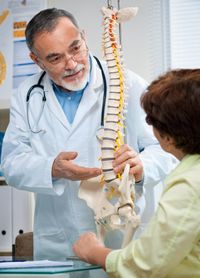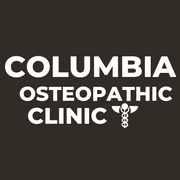An Introduction to Chronic Pain & Pain Management

Pain serves a purpose—it alerts you to an injury that needs medical attention. However, chronic pain is different because it lasts for weeks or years on end—and there might not be a permanent cure. If pain lasts for 12 weeks or longer, discuss pain management techniques with a physician using the following guide to inform your conversation.
What Causes Chronic Pain?
Once a person has persistent pain for several months at a time, nerve damage becomes more likely. At a certain point, chronic pain can outlast the initiating event, even after the injury heals. The nervous system continues firing signals to the brain that there’s something wrong—even when there aren’t any observable physical impairments, such as nerve and joint issues, side-effects of acute illnesses, or neurological and mental health issues.
How Is Chronic Pain Treated?
 The first step for treating chronic pain is to address the underlying condition if one has been identified. The person can then consider a multi-faceted approach to pain management, which might include:
The first step for treating chronic pain is to address the underlying condition if one has been identified. The person can then consider a multi-faceted approach to pain management, which might include:
Medication
Non-steroidal anti-inflammatory drugs are often recommended to relieve pain and inflammation. Some physicians also suggest tricyclic antidepressants or serotonin and norepinephrine reuptake inhibitors (SNRIs). However, using these drugs long-term can come with significant side-effects, like stomach ulcers, infertility, nausea, and decreased libido.
Acupuncture
Acupuncture is a form of traditional Chinese medicine that uses thin needles to help relieve tension throughout the body. Acupuncture can reduce the frequency and severity of chronic pain by targetting pressure points throughout the body.
Massage Therapy
Pain causes muscle tension, which can be relieved through massage therapy. Before you allow a masseuse to work on areas with chronic pain, make sure they understand your symptoms so they can address those concerns and the problem areas that might be causing the pain.
Electrical Stimulation
Low-grade electrical currents can help interfere with the nerve impulses that make you feel chronic pain. These soft “shocks” don’t hurt and help relieve muscle tension and prevent spasms that cause pain.
Osteopathic Manipulation Treatment
During osteopathic manipulation treatment (OMT), a physician moves the patient through a series of exercises to gently stretch and tone muscles. OMT spans up to 40 different techniques, including craniosacral manipulation and myofascial release, for a full-body treatment of chronic pain.
Nutritional Counseling
Your diet has a profound effect on your physical health. Certain foods, like turmeric root, can help relieve inflammation, which is usually associated with conditions that cause chronic pain. A nutritionist can help you select a diet to support your pain management routine based on the specific situation you are dealing with.
The key to effective pain management is finding a treatment plan with few side effects and long-lasting results. For many people, holistic alternative medicine can be just as powerful as conventional treatments, and they have fewer associated risks. To learn more about holistic healing and pain management in Columbia, MO, visit Columbia Osteopathic Clinic by calling (573) 875-4877 or visiting their website.
About the Business
Have a question? Ask the experts!
Send your question

